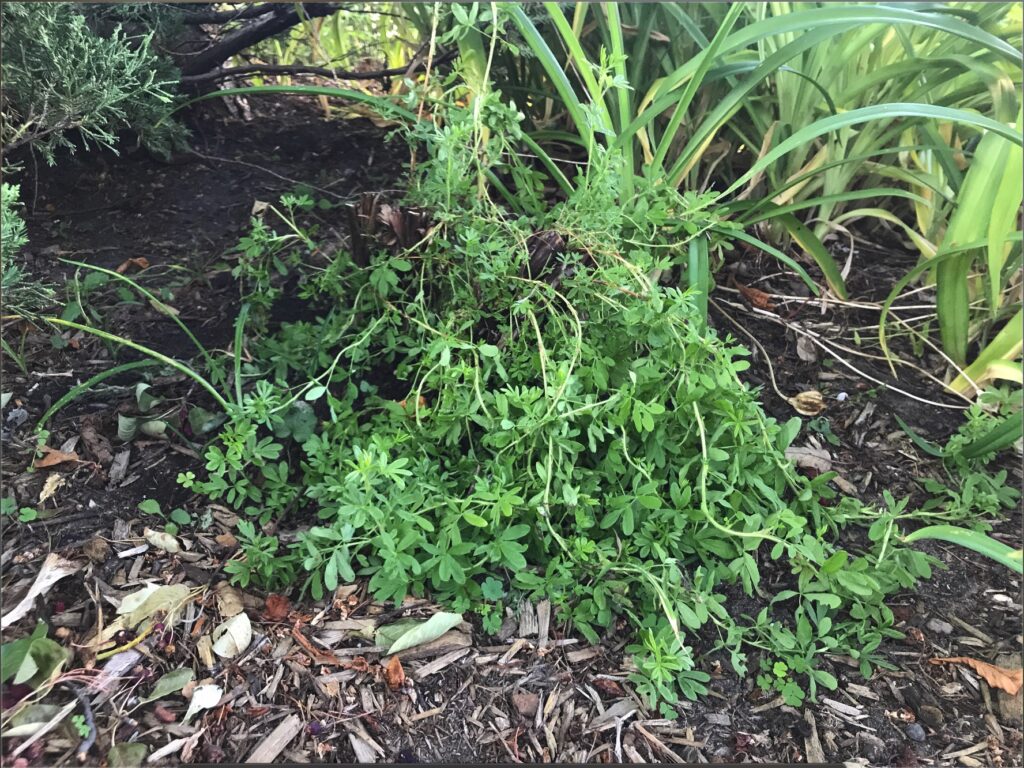
Location: West End Toronto, hardiness zone 7
Soil: Very sandy, drains readily
Hello,
My question is regarding a Yellow Cinquefoil Shrub. When it was originally planted (15+ years ago) it was in a full/part sun area and thrived as a shrub. In that time however a near by Chestnut tree has flourished and cast it in full/part shade. Additionally, it was not pruned appropriately and had become very woody and leggy, reaching for the sunlight. Early this Spring it was cut back to ~4″. This spring/summer it has put off many new, limp, green shoots, however I wonder if it will be able to rebound properly in full/part shade, or if it should be to full/part sun at the other end of the garden bed? If moving is the right thing to do, what is the best time to do it, and how large a diameter of the root should be taken?
Thank you for contacting the Toronto Master Gardeners.
Potentilla grow and flower best in full sun (6 hours) to light shade. site with fertile, well-draining soil that will stay evenly moist. If grown in partial shade, the plant won’t bloom as well and becomes spindly and shabby looking. Like all all shrubs, this shrub will benefit from a shovelful of compost added in the spring
The following information from one of our earlier posts will answer all your questions regarding when and how to transplant:
In general, any time you transplant a tree, shrub or perennial, you run the risk of losing it.In general, the larger and older the plant, the greater the chance that the transplant won’t take. That being said, early spring or early fall is the ideal time to transplant: cool temperatures and frequent rain will give the plant plenty of time to take root in its new location. Whenever a plant/shrub is transplanted some of the plant/shrubs roots will be cut and the remaining roots will need to resettle to be able to draw nutrients and water out of the soil to survive.
When transplanting, try and disturb the roots as little as possible. A cool overcast day with forecasted rain is ideal. Never transplant during the hottest part of the day or during a period of drought. When you are ready to transplant it is best to immediately put the plant in it’s new location- which means preparing the hole in the new location beforehand. The general rule of thumb is to dig a hole twice the width of the root ball.
Once the new location is prepared, dig down and around the shrub trying to keep as much of the root ball in tact. Place the shrub in its new location that has been half filled with water at the same planting depth as it was before. Backfill with the soil that was removed and pack it down with your foot making sure all the air pockets have been elliminated. Finish with a transplant fertilizer .
Remember, deeper, less frequent watering combined with regular applications of transplant fertilizer will help to minimize transplant shock and ensure a healthy, successful transplant.
The following links give step by step instructions on How to Transplant Trees and Shrubs, Transplanting or Moving trees and Shrubs in the Landscape.

